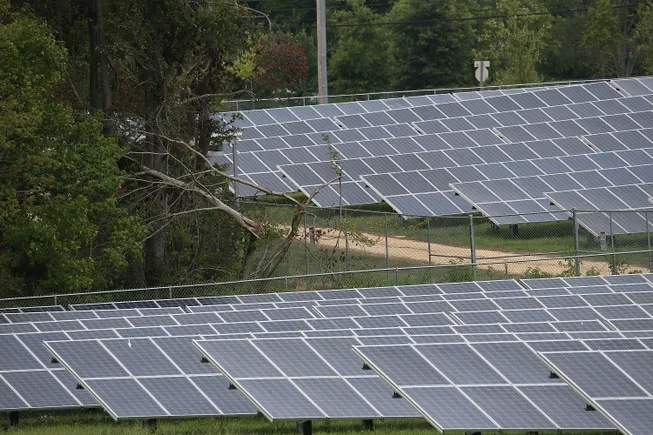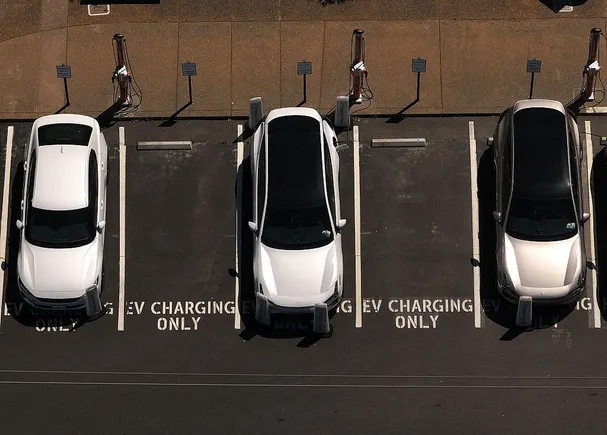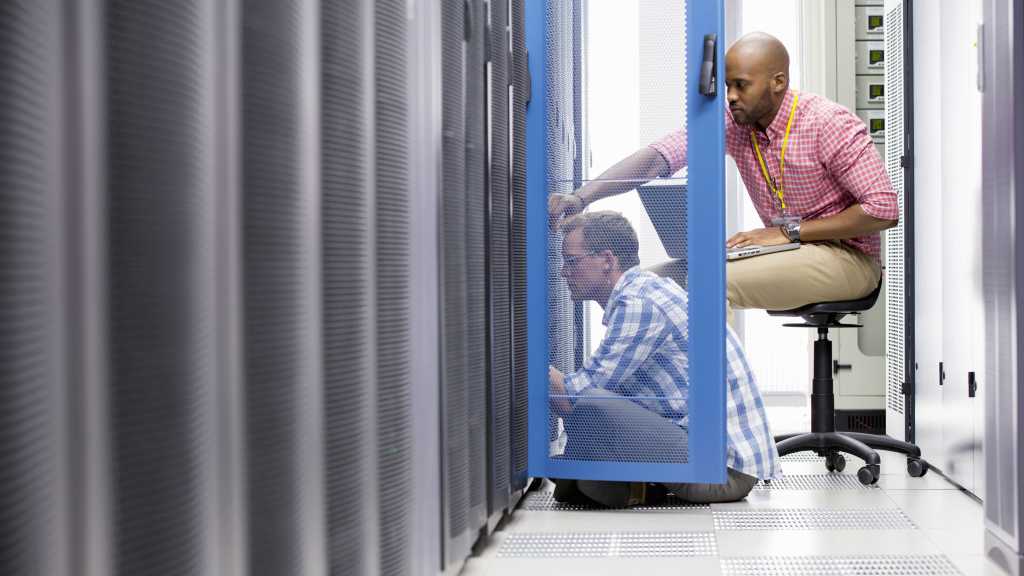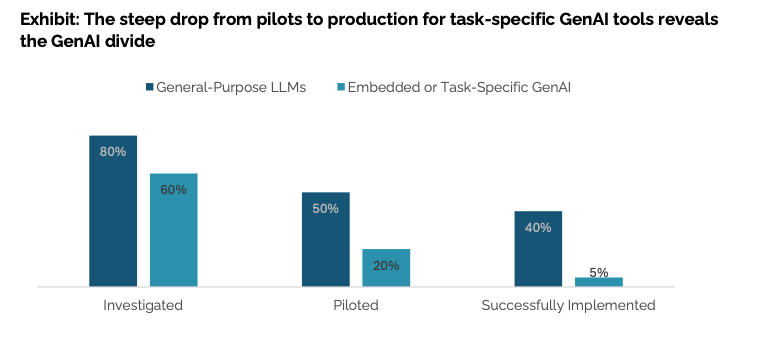This is today’s edition of The Download, our weekday newsletter that provides a daily dose of what’s going on in the world of technology.
On the ground in Ukraine’s largest Starlink repair shop
Starlink is absolutely critical to Ukraine’s ability to continue in the fight against Russia. It’s how troops in battle zones stay connected with faraway HQs; it’s how many of the drones essential to Ukraine’s survival hit their targets; it’s even how soldiers stay in touch with spouses and children back home.
However, Donald Trump’s fickle foreign policy and reports suggesting Elon Musk might remove Ukraine’s access to the services have cast the technology’s future in the country into doubt.
For now Starlink access largely comes down to the unofficial community of users and engineers, including the expert “Dr. Starlink”—famous for his creative ways of customizing the systems—who have kept Ukraine in the fight, both on and off the front line. Together, they have repaired and customized more than 15,000 terminals since the war began.
Despite the pressure, the chance that they may lose access to Starlink was not worrying volunteers at the time of my visit; in our conversations, it was clear they had more pressing concerns than the whims of a foreign tech mogul. Russia continues to launch frequent aerial bombardments of Ukrainian cities, sometimes sending more than 500 drones in a single night.
The threat of involuntary mobilization to the front line looms on every street corner. How can one plan for a hypothetical future crisis when crisis defines every minute of one’s day? Read the full story.
—Charlie Metcalfe
This story is from our forthcoming print issue, which is all about security. If you haven’t already, subscribe now to receive future issues once they land.
This article is also part of the Big Story series: MIT Technology Review’s most important, ambitious reporting. The stories in the series take a deep look at the technologies that are coming next and what they will mean for us and the world we live in. Check out the rest of them here.
NASA’s new AI model can predict when a solar storm may strike
NASA and IBM have released a new open-source machine learning model to help scientists better understand and predict the physics and weather patterns of the sun. Surya, trained on over a decade’s worth of NASA solar data, should help give scientists an early warning when a dangerous solar flare is likely to hit Earth.
Solar storms occur when the sun erupts energy and particles into space. They can produce solar flares and slower-moving coronal mass ejections that can disrupt radio signals, flip computer bits onboard satellites, and endanger astronauts with bursts of radiation.
While there’s no way to prevent these sorts of effects, being able to predict when a large solar flare will occur could let people work around them. Read the full story.
—Peter Hall
Why recycling isn’t enough to address the plastic problem
I remember using a princess toothbrush when I was little. The handle was purple, teal, and sparkly. Like most of the other pieces of plastic that have ever been made, it’s probably still out there somewhere, languishing in a landfill. (I just hope it’s not in the ocean.)
I’ve been thinking about that toothbrush again this week after UN talks about a plastic treaty broke down on Friday. Nations had gotten together to try and write a binding treaty to address plastic waste, but negotiators left without a deal.
Plastic is widely recognized as a huge source of environmental pollution—again, I’m wondering where that toothbrush is—but the material is also a contributor to climate change. Let’s dig into why talks fell apart and how we might address emissions from plastic.
—Casey Crownhart
This article is from The Spark, MIT Technology Review’s weekly climate newsletter. To receive it in your inbox every Wednesday, sign up here.
The must-reads
I’ve combed the internet to find you today’s most fun/important/scary/fascinating stories about technology.
1 Google is betting that AI can help you take better photos
So long as you don’t try zooming in on someone’s face, that is. (WP $)
+ Gemini is getting a new audio model capable of detecting tone. (TechCrunch)
+ Google’s AI efforts are certainly outpacing those of its hardware rival Apple. (Bloomberg $)
2 Meta’s AI hiring spree is on pause
Investors are increasingly concerned by the mad sums being bandied about. (WSJ $)
3 China is preparing to show off its hypersonic missiles
The world will be watching its military parade closely next month. (FT $)
+ Meanwhile, India has tested a missile that could hit deep into China. (The Guardian)
+ Taiwan’s “silicon shield” could be weakening. (MIT Technology Review)
4 RFK Jr. wants to send you MAHA food boxes
But concrete details are light on the ground. (The Atlantic $)
+ How MAHA is shaking up packaged goods’ supply chains. (Fortune $)
5 Extreme heat is driving cases of Legionnaire’s disease in NYC
Older air conditioning infrastructure is helping to spread dangerous bacteria. (Vox)
+ A fifth person has died in connection with the current outbreak. (ABC News)
6 What it’s like to vibecode for a massive startup
Managing AI coding apps is a whole lot like herding interns, supposedly. (Wired $)
+ What is vibe coding, exactly? (MIT Technology Review)
7 Starship’s rocket launch could delay flights in Florida
Even after the launch is completed. (TechCrunch)
8 This app will help you find the sunniest spots in Paris ☀️
The community-driven Jveuxdusoleil is updated in real time. (The Guardian)
9 The world’s only public diamond mine is in Arkansas 💎
Visitors have unearthed more than 35,000 precious gems since it opened. (Ars Technica)
10 It turns out Uranus had a hidden moon all along
And many more may be discovered in the future. (NYT $)
+ It’s the 29th known satellite to orbit the planet. (Scientific American $)
+ The moon is just the beginning for this waterless concrete. (MIT Technology Review)
Quote of the day
“It jumbles my freaking nugget that people can look at a squat and not understand how it’s supposed to look. You don’t need AI to do that.”
—Andrew Hiller, a CrossFit coach and critic of poorly-executed squats, tells the New York Times why doing away with vigilant human judges for the popular fitness race Hyrox would be a mistake.
One more thing
Are friends electric?
Thankfully, the difference between humans and machines in the real world is easy to discern, at least for now. While machines tend to excel at things adults find difficult—playing world-champion-level chess, say, or multiplying really big numbers—they find it hard to accomplish stuff a five-year-old can do with ease, such as catching a ball or walking around a room without bumping into things.
This fundamental tension—what is hard for humans is easy for machines, and what’s hard for machines is easy for humans—is at the heart of three new books delving into our complex and often fraught relationship with robots, AI, and automation. They force us to reimagine the nature of everything from friendship and love to work, health care, and home life. Read the full story.
—Bryan Gardiner





















